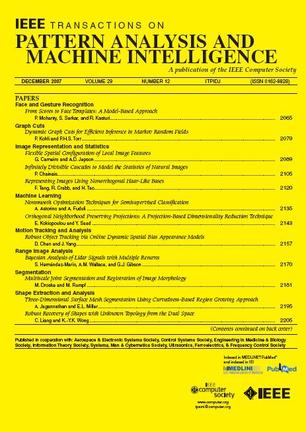Towards OOD Object Detection with Unknown-Concept Guided Feature Diffusion.
IF 20.8
1区 计算机科学
Q1 COMPUTER SCIENCE, ARTIFICIAL INTELLIGENCE
IEEE Transactions on Pattern Analysis and Machine Intelligence
Pub Date : 2025-07-18
DOI:10.1109/tpami.2025.3590735
引用次数: 0
Abstract
In general, learning plentiful knowledge corresponding to known objects is an important ability for humans. The unknown objects could be assumed to depart from the familiar knowledge. Inspired by this idea, we explore leveraging the extracted knowledge to reason a set of unknown concepts. And they could be used to address unsupervised out-of-distribution object detection (OOD-OD) that aims to detect unseen OOD objects without accessing any auxiliary OOD data during training. To this end, we propose a new approach, i.e., Unknown-Concept Guided Feature Diffusion (UCFD), including an object-related knowledge extractor and an unknown-concept guided diffusor for synthesizing virtual OOD features. Specifically, we define multiple learnable codewords to capture object-relevant visual knowledge from all object categories. To avoid the detection performance degradation of the in-distribution (ID) objects, these codewords are utilized to enhance object features. Next, an unknown-concept pool is constructed by mixing up these extracted codewords. Finally, to reduce the impact of lacking OOD data for supervision, we design an unknown-concept guided diffusor, which leverages the sampled unknown concepts from the pool to guide the reverse process to generate expected OOD features that deviate from the familiar knowledge. The significant performance gains on three different tasks demonstrate the superiorities of our method. Meanwhile, extensive visualization results show that our method could synthesize effective virtual OOD features.基于未知概念引导特征扩散的OOD目标检测。
总的来说,学习与已知对象相对应的丰富知识是人类的一项重要能力。我们可以假定未知的物体偏离了我们所熟悉的知识。受这个想法的启发,我们探索利用提取的知识来推理一组未知的概念。它们还可以用于解决无监督分布外对象检测(OOD- od),其目的是在训练期间不访问任何辅助OOD数据的情况下检测未见的OOD对象。为此,我们提出了一种新的方法,即未知概念引导特征扩散(UCFD),该方法包括一个与对象相关的知识提取器和一个未知概念引导扩散器,用于合成虚拟OOD特征。具体来说,我们定义了多个可学习的码字来从所有对象类别中捕获与对象相关的视觉知识。为了避免分布内(ID)目标的检测性能下降,利用这些码字来增强目标特征。接下来,通过混合这些提取的码字来构建未知概念池。最后,为了减少缺乏OOD数据对监督的影响,我们设计了一个未知概念引导扩散器,它利用从池中采样的未知概念来引导反向过程,以生成偏离熟悉知识的预期OOD特征。在三个不同任务上的显著性能提升证明了我们方法的优越性。同时,大量的可视化结果表明,我们的方法可以合成有效的虚拟OOD特征。
本文章由计算机程序翻译,如有差异,请以英文原文为准。
求助全文
约1分钟内获得全文
求助全文
来源期刊
CiteScore
28.40
自引率
3.00%
发文量
885
审稿时长
8.5 months
期刊介绍:
The IEEE Transactions on Pattern Analysis and Machine Intelligence publishes articles on all traditional areas of computer vision and image understanding, all traditional areas of pattern analysis and recognition, and selected areas of machine intelligence, with a particular emphasis on machine learning for pattern analysis. Areas such as techniques for visual search, document and handwriting analysis, medical image analysis, video and image sequence analysis, content-based retrieval of image and video, face and gesture recognition and relevant specialized hardware and/or software architectures are also covered.

 求助内容:
求助内容: 应助结果提醒方式:
应助结果提醒方式:


